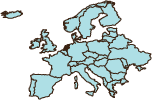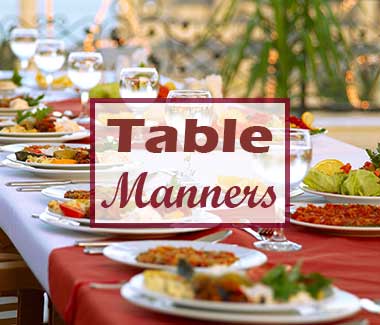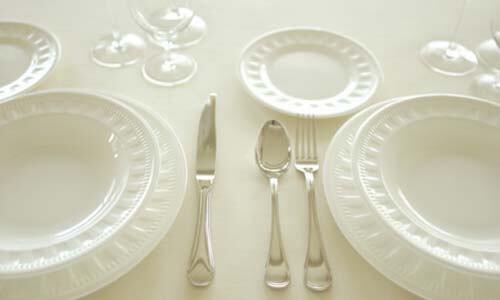Netherlands Dining Etiquette
international dining etiquette
Dining etiquette for toasts. The most common toast is proost. Maintain eye contact throughout the entire toast. If many people are being toasted, go around the table with your eyes, making contact with each individual as you make the toast.
table manners
Dining etiquette for beginning to eat. Begin eating only after the host has invited you.
Dining etiquette for utensils. The knife remains in the right hand, and the fork remains in the left. When the meal is finished, the knife and fork are laid parallel to each other across the right side of the plate, tips pointing to the ten o'clock position; the knife should be above the fork, with the blade side pointing in toward the plate.
Dining etiquette for the place setting. The fork and spoon above your plate are usually for dessert. Always start from the outside and work your way in, course by course. There will be separate glasses provided at your setting for water and white and red wine (after-dinner drink glasses come out after dinner).
Dining etiquette for your hands. Your hands are expected to be visible above the table. The only food eaten with the hands is bread or sandwiches.
Dining etiquette for passing food. Pass all dishes to your left. Salt and pepper shakers or holders should be passed so that the receiving person takes them directly; do not place on the table first.
Dining etiquette for eating salad. Never cut the lettuce in a salad. Fold it with your knife and fork so that it can be picked up in a small bundle with your fork.
Dining etiquette for seating. The most honored position is either at the head of the table or in the center, with the most important guests seated first to the left and then to the right of the head of the table or the host(s), in descending order of importance; if there is a hosting couple, one will be seated at each end of the table, with the male guest of honor seated to the right of the hostess, and the female guest of honor seated to the right of the host.
Quick snacks are available throughout the day in a variety of Dutch cafes. Broodjeswinkels are small shops that sell open-faced sandwiches, which are eaten traditionally with a glass of milk or buttermilk (try it'), Poffertjes are informal restaurants that serve fried dough pancakes, usually with powdered sugar. Finally, street stalls sell herring - either raw, salted, smoked, or dried. You buy the herring from a barrel, then hold it by the tail and eat it right there, on the street.
Dining etiquette for the home. Meals at a Dutch associate's home can be either relaxed or formal; take your cue from the information your host gives you when you are invited. Once within the home, you will be told where to sit, and there you should remain. Do not wander from room to room: much of the house is really off-limits to guests. Use the bathroom if you need to before you arrive, and avoid using the bathroom after sitting down to your meal. At the table, be sure to look for place cards, or wait until the host indicates your seat: do not presume to seat yourself, as the seating arrangement may be predetermined.
Dining etiquette for tipping. Restaurants automatically include a 15-percent gratuity in your bill.




